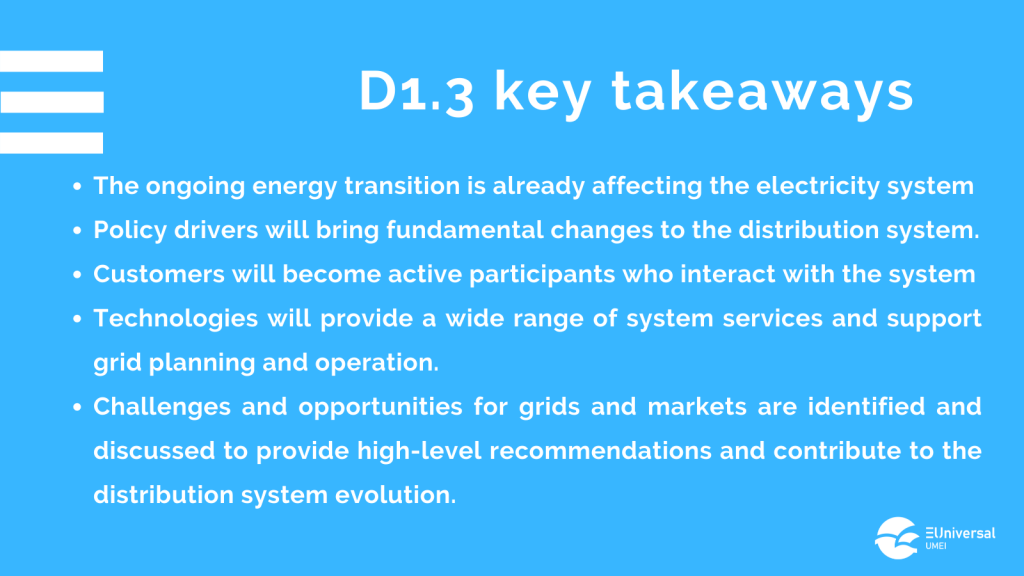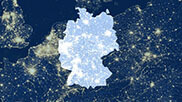The EUniversal project has the primary objective to overcome the existing limitations in the use of flexibility by distribution system operators (DSOs) by implementing the Universal Market Enabling Interface (UMEI) which aims to foster the provision of flexibility and link the active system management of distribution system operators with electricity markets.
In this context, Deliverable 1.3 “Challenges and opportunities for electricity grids and markets” analyses the recent and ongoing European policy and strategy that will shape the future electricity grid and markets.
Challenges and opportunities for grids and markets are identified and discussed to provide high-level recommendations and contribute to the distribution system evolution.
The full document provides a high-level assessment of the needs of the future distribution system.
This top-down qualitative approach identifies the overall objective to be achieved, the limits of strategies, and the high-level challenges to be addressed.
EUniversal Deliverable 1.3 contributes to the ongoing transformation of the electricity system by discussing the following points:
• The analysis of the future distribution system by considering the long-term vision of the European Union (EU) for a carbon-neutral society in 2050 and reviewing national energy and climate plans of several target countries (Germany, Spain, Belgium, Portugal, and Poland).
• The definition and identification of the relevant technology options to study the existing interrelationships among them and determining the subset of technology options responsible for severe impacts on the distribution system.
• The assessment of the expected future scenario for the EU, to understand the different deployment levels expected for each technology option. The most ambitious EU scenarios that respectively foster electrification, energy efficiency, use of hydrogen, and use of powerto-X technology are reviewed to understand the needs of the future distribution system.
• The discussion on the main challenges concerning the future distribution system and the provision of recommendations to address these challenges focusing on the consequences due to the deployment of the technology options.
The document concerns the required changes in planning and operation practices, the adoption of mechanisms for flexibility procurement, the required innovations in regulation, and the required changes in business models of the main distribution system actors.
The activities described in this deliverable aim to provide insights and recommendations highlighting challenges and opportunities from the technical, regulatory, and market perspective to contribute to the evolution of the distribution system from now to 2050 and beyond.

Partners that contributed to this deliverable: Comillas, Vlerick Business School, INESC TEC, IEN, EON, E.DSO and E-REDES






